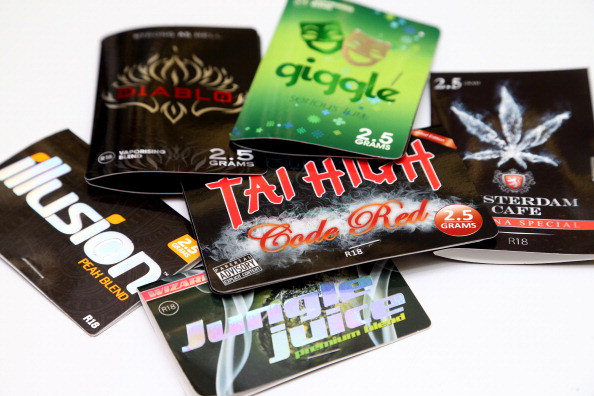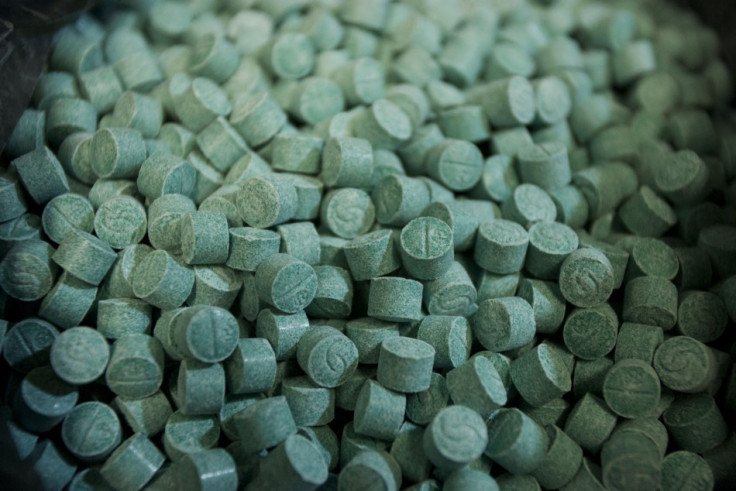International Day Against Drug Abuse: How UK deals with new psychoactive substances
International Day Against Drug Abuse comes a month after the Psychoactive Substance Act was enforced.

Every year, on 26 June, the world celebrates the International day against drug abuse and illicit trafficking. The idea of setting aside a special day was to express the UN's determination to strengthen action and cooperation in order to achieve the goal of an international society free of drug abuse.
This year, the day comes exactly a month after the enforcement of the UK Psychoactive Substance Act. After months of debate, a blanket ban on the sale, supply, importation and exportation of so called 'new psychoactive substances' (NPS) has been adopted, in response to a growing interest in, and availability of, such drugs.
The rise of these new psychoactive substances – also colloquially known as 'legal highs' – has been widely talked about in the media, but patterns and prevalence of use in official datasets remain patchy.
So what exactly are new psychoactive substances and how do they affect people?
Risk to the health
In the UK, the substances came to public attention roughly ten years ago and they can best be defined as legal substances designed to be outside the scope of the Misuse of Drugs Act (1971), while still mimicking the effects of controlled drugs.
The largest group of NPS are synthetic cannabinoid receptor agonists (SCRAs) - smoking mixtures which look like cannabis, but can in fact be much more potent. They have names such as Spice, Black Mamba, or Happy Joker. Stimulant type drugs like BZP or mephedrone, for their part, replicate the effects of amphetamines or MDMA, while others such as Bromo-dragonfly have hallucinogenic properties.
While NPS have been cited in a number of fatalities, very few deaths appear to have been as a direct result of taking one of these substances in isolation. Since every drug is different, it is also difficult to generalise about their effects. However, some victims have ended up in hospital after experiencing breathing problems, a feeling that their heart was coming out of their chest, seizures, or convulsions. In the case of SCRAs, dependency and addiction are also major concerns.
A decade of NPS
In the 21<sup>st century more vigorous campaigning against drug abuse had led to a decline in the consumption of controlled drugs such as heroin and cocaine. Yet, the rise of a new type of drugs, NPS, became apparent between 2008 and 2009 in the UK as traditional models of drug diffusion began shifting towards the internet.
"The tipping point in the UK was the arrival on the market of BZP from New Zeland. It gave a gateway to the idea that legal drugs could be sold as a good alternative to controlled drugs. Getting the drugs would not have been so easy without the development of web though, it enabled new diffusion and supply routes to emerge and people to research new drugs used in clinical research that were being discarded and could potentially be used as psychoactive substances", Harry Shapiro, director of DrugWise, author of a recent report about NPS, told IBTimes UK.
Drugs had traditionally been controlled under the Misuse of Substances Act before they became popular. What is new about the NPS phenomenon is that is that many substances became popular before they could be controlled. "The authorities were constantly one step behind. Each time a psychoactive substance was controlled under the Misuse of Drugs Act, new substances appeared on the market", Shapiro points out.

Controlling NPS
The Psychoactive Substance Act was thus thought of as a step to regain control over the distribution and consumption of these substances.
The legislation has caused much controversy, with critics accusing it of not going far enough or not relying enough on the advice of experts. The text effectively "makes it an offence to produce, supply, offer to supply, possess with intent to supply, possess on custodial premises, import or export psychoactive substances; that is, any substance intended for human consumption that is capable of producing a psychoactive effect".
"Under the new Act there is no offence of possession, no grading of harms. The idea behind this legislation is really to stop high street sales, but no-one actually believes it will stop the use of these drugs. I think casual and curious users may be deterred as they are unlikely to actively seek another way to get the drugs but the most vulnerable people, those who are in serious trouble and well connected to drug sellers, they will carry on", Shapiro says.
Most vulnerable populations
It is not clear what impact the law will effectively have, as there are no exact figures or comprehensive studies to estimate who is most affected. Most people who seek out treatment for drug addiction do not cite NPS as their primary problem. Those who are likely to be most affected - homeless people, prisoners, students - are not taken into account in the different surveys. This makes it extremely hard to come up with appropriate treatment and care solutions.
"Those in most need often d'ont come forward to drug treatment services. At the same time, many services have lost their community outreach capacity to encourage people into services. The most vulnerable people are often called 'hard to reach'. What they are in fact is 'under-served'."
NPS are not the only problem: other issues such as the surge in ecstasy use among young people should also be urgently addressed. Perhaps the World Day against Drug Abuse can be a platform to voice these concerns.
© Copyright IBTimes 2025. All rights reserved.






















